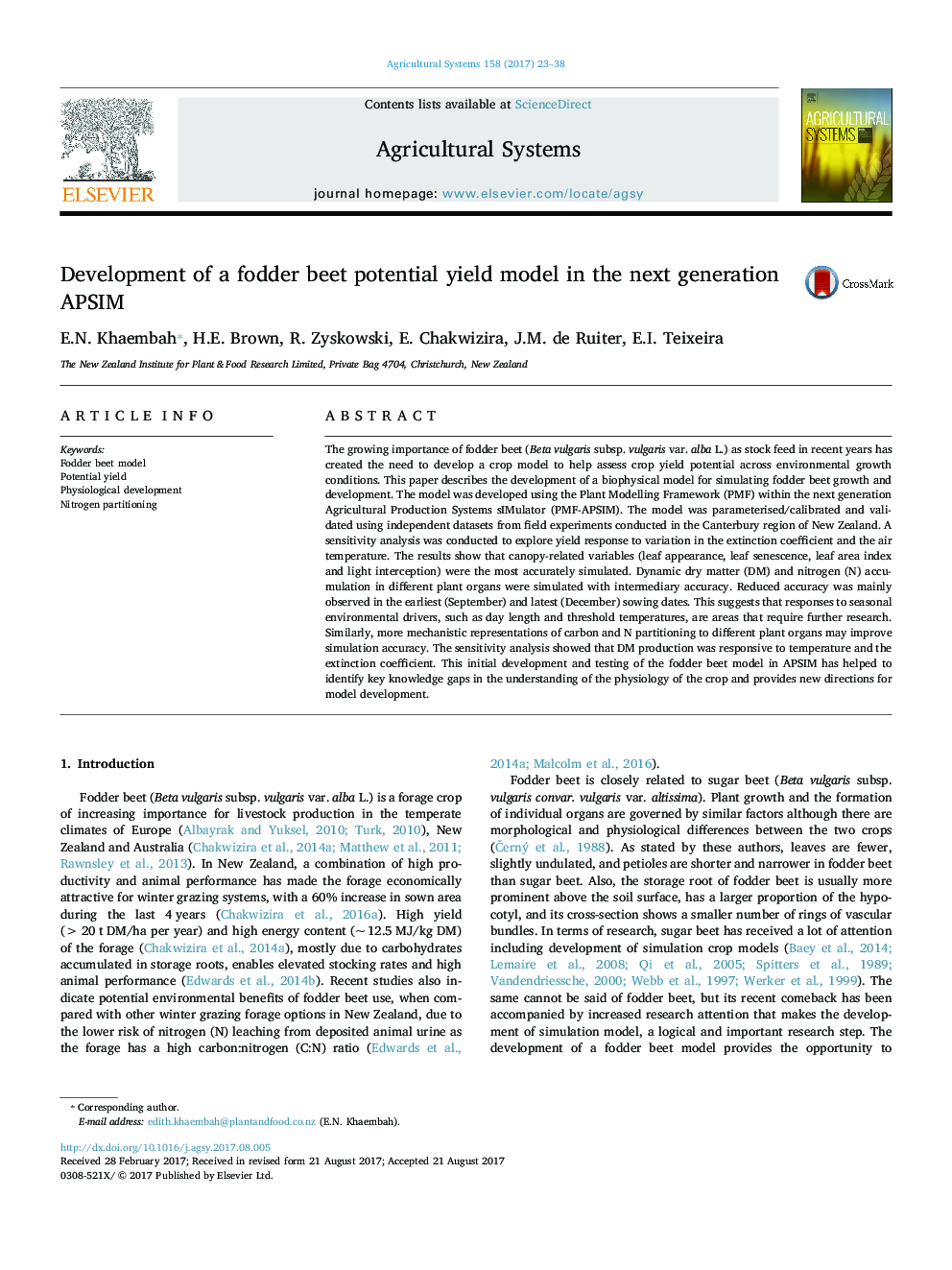| Article ID | Journal | Published Year | Pages | File Type |
|---|---|---|---|---|
| 5759678 | Agricultural Systems | 2017 | 16 Pages |
Abstract
The growing importance of fodder beet (Beta vulgaris subsp. vulgaris var. alba L.) as stock feed in recent years has created the need to develop a crop model to help assess crop yield potential across environmental growth conditions. This paper describes the development of a biophysical model for simulating fodder beet growth and development. The model was developed using the Plant Modelling Framework (PMF) within the next generation Agricultural Production Systems sIMulator (PMF-APSIM). The model was parameterised/calibrated and validated using independent datasets from field experiments conducted in the Canterbury region of New Zealand. A sensitivity analysis was conducted to explore yield response to variation in the extinction coefficient and the air temperature. The results show that canopy-related variables (leaf appearance, leaf senescence, leaf area index and light interception) were the most accurately simulated. Dynamic dry matter (DM) and nitrogen (N) accumulation in different plant organs were simulated with intermediary accuracy. Reduced accuracy was mainly observed in the earliest (September) and latest (December) sowing dates. This suggests that responses to seasonal environmental drivers, such as day length and threshold temperatures, are areas that require further research. Similarly, more mechanistic representations of carbon and N partitioning to different plant organs may improve simulation accuracy. The sensitivity analysis showed that DM production was responsive to temperature and the extinction coefficient. This initial development and testing of the fodder beet model in APSIM has helped to identify key knowledge gaps in the understanding of the physiology of the crop and provides new directions for model development.
Keywords
Related Topics
Life Sciences
Agricultural and Biological Sciences
Agricultural and Biological Sciences (General)
Authors
E.N. Khaembah, H.E. Brown, R. Zyskowski, E. Chakwizira, J.M. de Ruiter, E.I. Teixeira,
